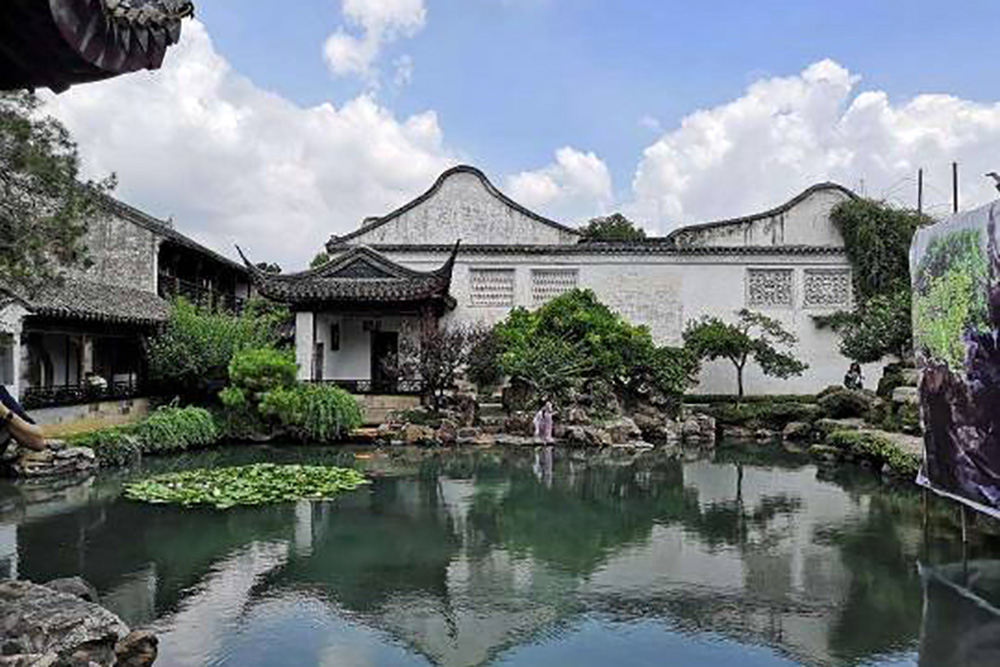A friend recommended the book Jiangnan no Niwa: Chinese Literati and Their Spirit(Japanese book), so I decided to give it a read. I found it fascinating and wanted to share my thoughts here.
The Jiangnan region refers to the area spanning southern Jiangsu Province and northern Zhejiang Province, with Suzhou—a UNESCO World Heritage water town—at its heart. This region is famous for the literati gardens that flourished there.
This book introduces gardens such as the Humble Administrator’s Garden, Lingering Garden, Master of the Nets Garden, Canglang Pavilion, and Lion Grove (all in Suzhou), Jichang Garden (Wuxi), Slender West Lake, Ge Garden, He Garden (Yangzhou), and Yuyuan Garden (Shanghai). Personally, I’ve visited all of these gardens except the ones in Wuxi and Yangzhou, so I’d consider myself a bit of a garden enthusiast.
What sets this book apart from typical guidebooks is its focus on the historical and philosophical background of these gardens. For instance, the Humble Administrator’s Garden was built by Wang Xianchen, a Ming Dynasty official who, due to his integrity, refused to accept bribes. As a result, he was demoted three times and eventually quit his position, returning to his hometown of Suzhou to build this garden. Stories like these, which you wouldn’t discover just by visiting the gardens, make the book especially engaging.
What Is a Literati Garden?
Literati gardens emerged as a reaction against the ideology of power. While Taoist hermit philosophy became popular among officials, most couldn’t actually retire to reclusive lives. Instead, they built private gardens near their homes as spaces for “mini-retreats.” This trend became so widespread that the Taihu Lake area in southern Jiangsu ran out of rocks due to overharvesting for garden construction!
Chinese literati balanced two seemingly contradictory ideologies: the pursuit of power and a desire for retreat. Even when they embraced a reclusive lifestyle, they didn’t entirely abandon their aspirations for fame and achievement. A true recluse was recognized as such only if they maintained their scholarly reputation; otherwise, society would dismiss them as mere failures. This dual mindset heavily influenced their garden design.
As the book explains:
The history of Chinese gardens begins with imperial palace gardens reflecting power, followed by literati gardens rooted in reclusive philosophy. These two distinct traditions—like the dual ideology of the literati—did not evolve independently but coexisted and influenced one another.
It’s easy to see why officials, whose jobs were often fraught with stress—from authoritarian rule to the pressures of foreign occupation—sought solace in gardens as places of retreat.
The Unwritten Rules of Literati Gardens
The book identifies the unwritten rules of literati gardens:
- Reflect the owner’s sentiments as a recluse.
- For example, the artificial mountains and valleys in the gardens symbolized the ups and downs of life, mirroring the owner’s personal struggles.
- Embrace natural scenery as it is.
- Separate the garden from the living space.
- Though often adjacent to the owner’s residence, the garden was physically separated by walls and accessed through a dedicated gate.
- Designed by the owner themselves.
- The garden’s layout was conceived by the owner to reflect their emotions, though artisans or painters with gardening expertise often assisted in executing the design.
The Master of the Nets Garden is the only exception to rule 3. Due to its small size, it integrates indoor and outdoor spaces in a circular layout, resembling the gardens of Kyoto temples. Perhaps because of this structure, the Master of the Nets Garden is particularly beloved by Japanese visitors—and I find it very calming myself.
Recommendations for Visiting Jiangnan Gardens
These gardens have changed owners and undergone modifications over the years, but they remain treasures worth visiting. If you ever have a day to explore Suzhou, I recommend visiting both the Humble Administrator’s Garden and the Master of the Nets Garden for their contrasting structures and scales. If time permits, the bonsai section on the west side of the Humble Administrator’s Garden is a must-see—the giant bonsai trees are truly surprising.
Reading Jiangnan no Niwa: Chinese Literati and Their Spirit before your visit will make the experience much more enriching. I highly recommend it to garden and architecture enthusiasts. I’m now inspired to visit Wuxi and Yangzhou someday—places I’ve yet to explore.








